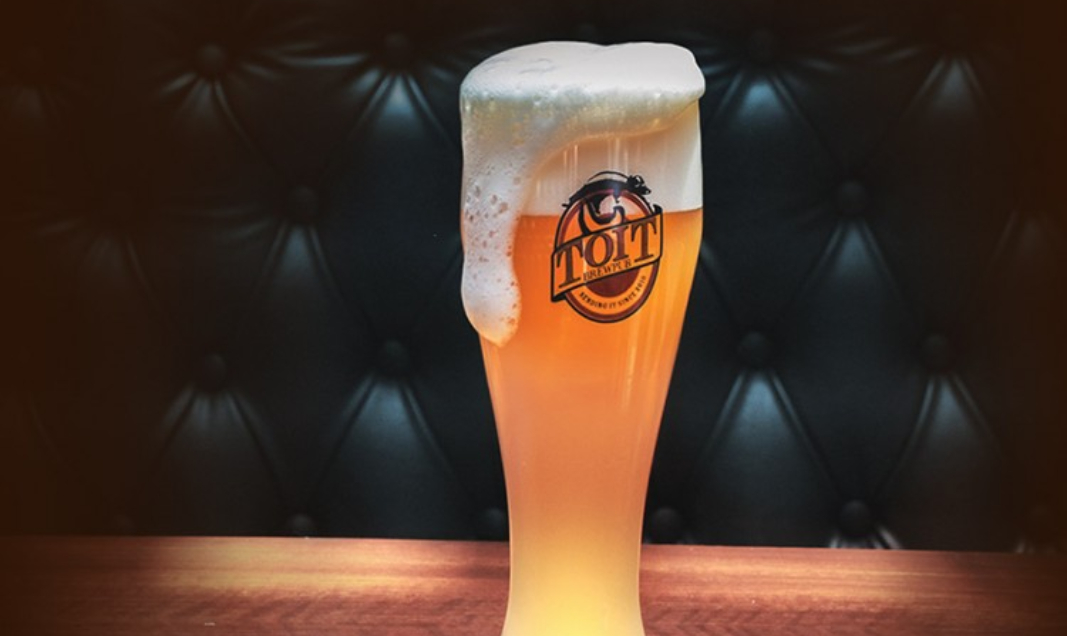
Know Your Lager
The Lager is the young-un of the beer family, and you didnt hear it from us, but was also a bit of an accident.
In its short history though, the lager has done well for itself and remains one of the most widely enjoyed beers.
But first, a history lesson
This beer type is perhaps one of the most popular across the world. In terms of brewing chronology, it’s fairly young. And an accidental discovery at that, which seems to be a rather popular trend where brewing is concerned.
Back in the day, during the time of the ancients, brews were traditionally brewed at higher temperatures and warm ales were all the rage.
But somewhere in Bavaria, people began to realise that they liked these brews served cold as well. A bit of a refreshing toss up in the regular scene. Brewers used to store their brews in the icy caves of the German Alps, and as a result of what was most likely natural mutation, yeasts capable of fermenting in cold temperatures were born, the bottom fermenting type.
You see, larger beers are made with a very specific kind of yeastthe Saccharomyces Pastorianus, if we want to get all nerdy about it.
You see, larger beers are made with a very specific kind of yeastthe Saccharomyces Pastorianus
Its an easy going type, working much slower than most other yeast types, and also at a much cooler temperatures. The popular notion was that the Cerevisiae strain gradually evolved to the Pastorianus type, to adapt to those previously mentioned icy cave environments.
Basically evolution stepped in, and the rest is history. Or did it?
A study in 2011 found that the parent strain of the Pastorianus is the Saccharomyces Eubayanus, which traces back to Argentina.
Interesting? It gets even better.
The study leans on what is popularly known as the ‘Columbian Exchange wherein European invaders brought in colonialism, slavery, disease, alcohol and religion into the new world (the classic coloniser combo), in exchange for treasures and crops.
Among the things they took back, the Eubaynus seems to have been an unaccounted for (and most valuable, in our opinion) item, which made its journey across the Atlantic sometime in the 1500s, destined to unite with the Cerevisiae, and yet another golden treasure was procured by the Europeans.
Lager became wildly popular across Europe and has remained one of the most widely enjoyed forms of beer ever since.
The study leans on what is popularly known as the ‘Columbian Exchange
Random Lager-Than-Life Facts (Hi, Bsb Fans!)
Fact #1
National Lager Day is celebrated on the 10th of December.
Fact #2
Lager comes from the German word lagern, which means ‘to store. This is mainly because of how it was ‘stored’ centuries ago.
Fact #3
It is a bottom fermenting beer.
Difference Between Ales And Lagers
The primary difference between ales and lagers is the kind of yeast that is used during the fermentation process.
Ales use top-fermenting yeast while lagers use bottom-fermenting yeast.
Of course, the basics like appearance, mouth-feel and aroma also vary. But this is all caused in the first place by the kind of yeast used during fermentation. These differences however, hold true not just between ales and lagers, but even for categories within the two types.
Ales tend to be more fruity, while lagers tend to be simpler in their taste, which is probably the reason the latter is usually described as crisp tasting.
Types Of Lagers
American Pale Lagers
These are light-coloured, with a light sweetness, and are best served chilled.
American Dark Lagers
Lighter and not as rich as the darker German lagers, they still have a bit of a nip.
Bock Beer
These lagers are usually dark and very malty.
Doppelbock
Another dark one, this comes from the Italian Alps. It was first brewed by monks, who used as a source of nutrition while fasting. Are very malty and have a rich bodied taste.
Dortmunder Export
This one’s a strong one, and has a strong amount of maltiness and happiness, along with a bright gold appearance.
Eisbock
Eisbock or ice bock, is one of those weird brewing experiments that turned out right. You get this beer by putting already fermented beer in subfreezing temperatures. Once the water crystals that form are removed, the resulting beer is a stronger version of what was first brewed.
Helles Bock
This beer is a pale version of traditional Bock Beer (Helles means pale).
Maibock
It’s called Maibock because it is brewed in the month of May. It’s a paler version of the traditional Bock Beer and younger in the Bock family tree.
Mrzenbier / Oktoberfest Beers
Amber in colour, this one is traditionally brewed in March (Mrz), stored in caves for the course of the Summer, and then served in August. It eventually gained the title of the official Oktoberfest Beer.
Munich Dunkel
A brown lager, this is considered a maltier version of the Munich Helles.
Munich Helles
Helles means pale, and this one has traces of sweetness and maltiness.
Pilsner / Pils / Pilsener / Plzensky
It’s a classic lager that hails from the Czech Republic. It has all the right combinations of aroma, maltiness and a refreshing bitterness.
Rauchbier (Smoked Beer)
This beer can either have a very faint smoky taste or a an extremely pungent one. Not an easy -to-drink lager for sure!
Schwarzbier
A speciality lager from northern Bavaria, this one is a dark and dry beer.
Vienna Lager
The Vienna Lager is very popular not just in Austria but in Mexico as well, due to the rule of Emperor Maximillian there. It is a malty, medium body lager, and is similar to the Mrzenbier.
Pouring A Lager
For any beer, the first step is to use a clean glass. It affects the flavour of the beer more than you could possibly imagine. Also, the more hygienic option.
Hold your glass at a 45 angle.
Pour the beer, with the centre of the sloping part of the glass being the target.
When it’s half-full, bring the glass to a 90 angle and continue to pour the same way. You will get a gorgeous foam head. And head is great for beers. It adds to the aroma and makes it look great for serving. (And that Instagram photo! You know youre going to take one,be honest.)
Lagers are usually served in the Pilsner Glass and Mugs.
Types Of Lager Glasses
While it isn’t a strict restriction, Lagers are usually served in the Pilsner Glass and Mugs.
The Pilsner Glass is a thin and slender glass, and hold 12 ounces. It’s great for all styles of Lagers because it captures the sparkling nature of this plain beer and allows for head retention as well.
The MugThis heavy, chunky piece of glassware is fun to drink out of and definitely more fun to clink while toasting than other beer glasses. The Mrzenbier is usually served in this.
Temperature At Which To Consume A Lager
Beers have ideal serving temperatures that they should be consumed at. This is because that specific temperature brings out the best in terms of flavour and aroma. It is a general rule that the strength of the beer has a correlation to the temperature it is served at. So the higher the temperature (the warmer the beer) the stronger it is supposed to be. (higher alcohol content)
Light bodied lagers are usually consumed cold at 40-45F (4-7C), medium bodied ones at a cool 45-50F (7-10C), Bocks at 50-55F (10-13C) and Dopplebocks and Eisbocks at a warm 55-60F (13-16C).
And that is pretty much all you need to know about a Lager. But we encourage you to more extensive research of your own, especially by trying some of our lagers. Itll give you all the inspiration you need to jump right into the subject.
JOIN THE CRAFT
BEER MOVEMENT!
If you think you'd love to work at Toit and will be the perfect fit for us,
let us know! Send your resumes to







